How to Find out if an Electronic Vacuum Tube Is Good
- Login to post comments
Electron tubes are almost outdated, but there was one time when the electron tube was in every piece of electronic hardware that received or transmitted Radio Frequency signals or accomplished some other electronic function like amplifying sound. As we will discuss, tubes were a giant step forward in getting wireless transmissions received or transmitted in the early years of radio. In England, tubes are called valves, but if you call them a tube or a valve, they still do the same thing. Tubes are called vacuum tubes, and you can say they are electronic tubes. It is the same function, same thing, just different wording.
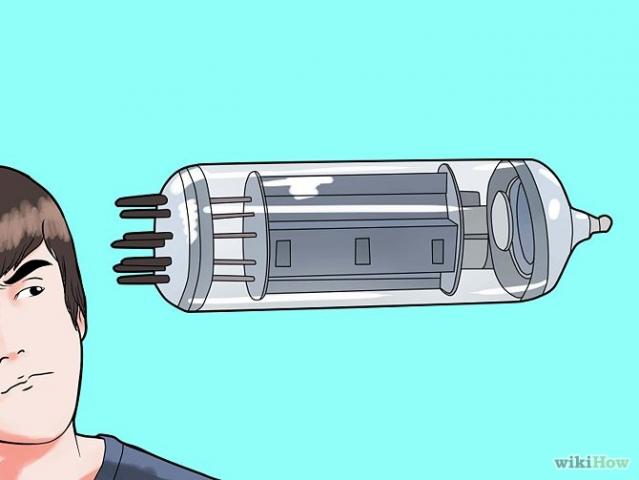
1. Tube names are derived by the number of electrodes they contain. All common tubes use a filament or heater, similar to the filament used in incandescent light bulbs. The function of the heater or filament is to heat up and release free electrons, which are then controlled by the other electrodes in the tube. Tubes with a "directly heated" cathode use the filament as the cathode. Tubes with "indirectly heated" cathodes have the filament encased within a metal tube, which serves as the cathode. Triodes have 3 electrodes: cathode, grid and plate. Tetrodes have 4 electrodes: cathode, control grid, screen grid, and plate. Pentodes have 5 electrodes: cathode, three grids - control grid, screen grid, suppressor grid and plate.
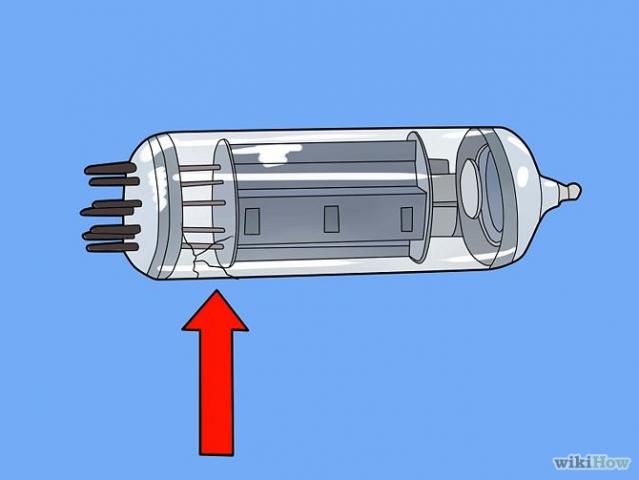
2. Sometimes the grids break down, shorts out, and sometimes the filament will sag, touch one of the grids, and - out goes your tube. Unless you have some sort of protective circuit built in, many other parts can go up in smoke too.
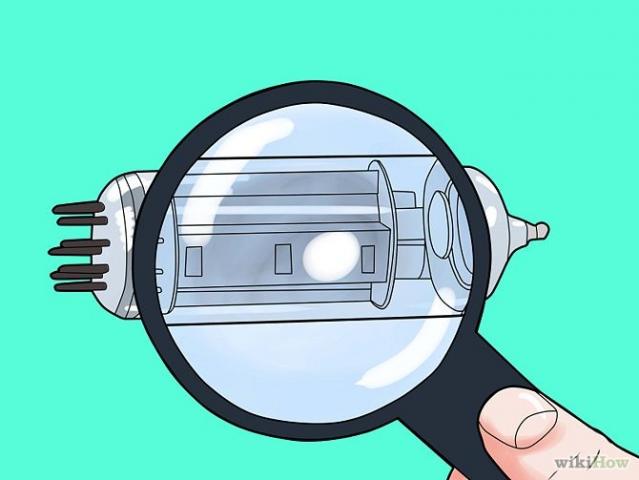
3. Investigate the sealants. The 572B to the right was in normal service, but since it was poorly made in the production line, no insulator was placed between the wire feed coming through the top of the tube for the plate connection. When it got hot enough, it melted the solder connection and came loose, rendering this tube unusable till the cap is re-soldered with high temp solder. The way that they have made the pins on the bottom base of the tube, and the cap on the top, made this tube highly susceptible to early tube failure. The materials that are used to seal the air out of the glass envelope and bond the glass to the wire, deteriorate with time, and can let in air causing this tube to fail prematurely. High temperature sealants are used on all tubes, but all these sealants will, in time, break down, and allow some air into the tube. Poorly made tubes, like these, did not use the best sealants so they are even more susceptible to early tube failure.
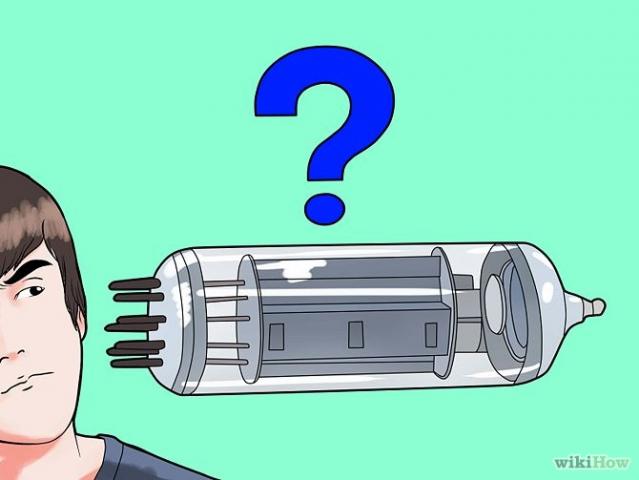
4. Know how the tubes are made. Regardless of what tube it was, how it was made was the same basic rule of thumb. Some tubes have indirectly heated cathodes, which is another part of a tube, that emit electrons, instead of the filament. It heats the cathode to a high temperature, and makes it emit electrons. It's a complex idea but the basics of a tube are simple.
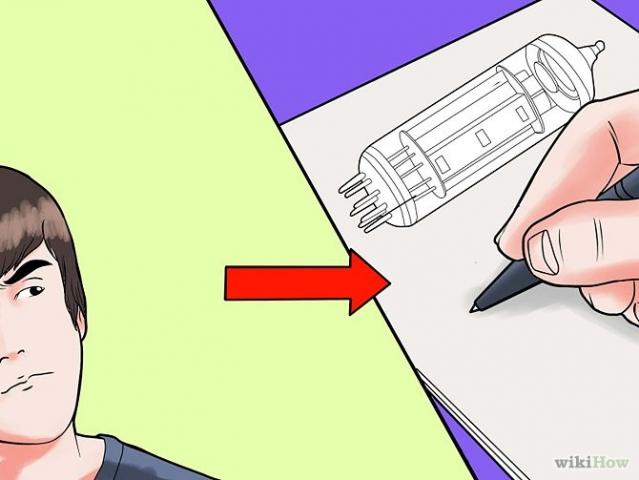
5. Study specific models. For reasons of ease of this discussion, we shall talk about the simple triode tubes used in Amateur Radio, and one commercial broadcast tube of the past, the old stand byes, the work horse of their day!! But for fun, we also will include one ceramic tube. The pic is of a 4CX800A7 (8877). We will talk about the 4CX800A, a tube similar to the 4CX800A. The pic just shows the style of the ceramic tubes. All are pretty much based on the same scheme, except for the higher power KLYSTRON, and HIGH WATTAGE BROADCAST TUBES! They even have handles because they were so heavy and unwieldy. Most were either cooled by circulating water, or forced-air cooling.
- The Eimac 3-500Z, and the common lovely bottle tubes 811A, with the 572B, used in Amateur Radio transmitters and power amplifiers, and the 833A, which was used in early Gates, Collins, Westinghouse, RCA and General Electric AM transmitters.
- These tubes, all are TRIODES, meaning they have 3 working parts, all of which are necessary to their main function and operation, so lets start with the Eimac first. The 3 means it is a triode, 3 parts. The 500 was the power dissipation of the tube, and order number, and the "Z" stood for zinc plated plate, now replaced with graphite, so if you got a beautiful 3-500Z it had a zinc plated anode (plate). If it was a 3-500G, the plate is made of graphite.
- The Filament was a coil of treated tungsten wire, rolled into a coil of the same tungsten wire, and the tungsten was coated with thorium, or radium, wound around a ceramic insulator. It took 6 volts at 25 AMPS ! This little tube had a powerful punch, and threw off some magnificent heat, as you might expect, using 25 AMPS of current! So much so it had to have constant flow of cool air and if it wasn't cooled by forced air through the cabinet, the soldered pins on the bottom of the tube would dislodge from the heat, and drop off. Some High Power RF amplifiers used Pyrex glass chimneys, and squirrel cage fans to force air around the tubes to keep them cool. They looked a lot like the Coleman lantern glass globe. The design of this tube was unlike any other, and it was a tried and true workhorse for the amateur radio hobby. It is still readily available tho, as we will discuss later. The element radium was found to be a little too strong in releasing electrons, so it was quickly taken from the tubes, and was seldom used, other than in experimentation tubes in a laboratory. Radium was, and still is used in some high performance X-ray tubes for medical purposes, along with Cesium.
- One of the first tubes used for Amateur service, the 811A, has been around since the early days of radio. It's filament is in a large M design, and coated with thorium for electron emission advancement, running the full length of the plate,to holders, and between the grid. Really pretty looking when it is lit up. It first was used as an audio amplifier in some 30 to 50 watt loudspeaker systems, amplifying sound dramatically, then some bright engineer saw something else in this tube, and decided to fashion design it, and build around it, and make it into an RF amplifier tube. It's reliability under stress and high performance output, at the time, made it an excellent choice for use in Amateur Radio transmitters, and RF Power Amplifier circuits. The 811A only had one drawback, and that was the amount of PLATE VOLTAGE and PLATE CURRENT it could handle. Plate voltage and current are the key factors as to how much power you would be able to pull from any tube. The 811A plate RF dissipation was 150 to 200 Watts MAX.
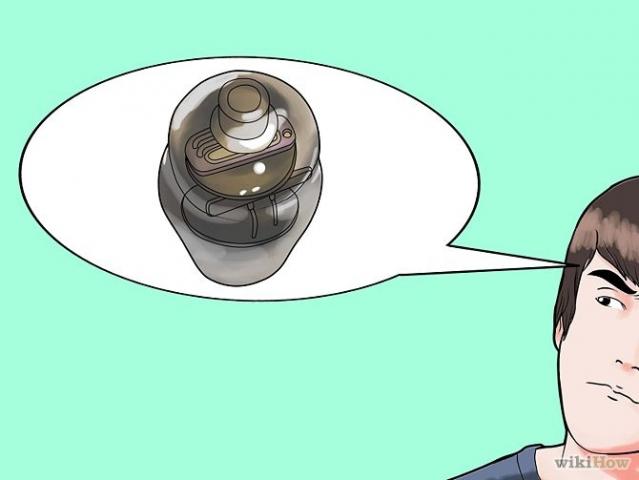
6. Look at this image of the little 811A. It may look big, but it's one of the smallest of the original amplifier tubes for an amateur radio amplifier. The tube in this pic is still good, but it also has some problems that make it less than perfect for normal use. It needs to be gettered, and tested before it will be returned to the amplifier, or transmitter.In Constant service, the plate voltage could not exceed 1000 Volts D.C. In intermediate commercial and Amateur radio, you could have 4 of the 811s running 1200 to 1500 Volts D.C. with about .300 milliamps of current on the plate, and still not damage the tube. Collins was probably the first to use this tube in a Power Amplifier class for Amateur Radio. RCA brought forth the super rugged, unbelievably powerful 572B, and its' replacement of the 811s meant that you could have more power output, with the new replacement tube. It would fit right into the same socket as the 811A, and it could handle from 2500 to 2800 Volts D.C. with about .375 milliamps of current on the plate. You could have a great deal more high voltage on the plate, and increase the plate current to about .375 milliamps, and not have the tube damaged, or gas up as much as an 811A would under certain circumstances. A few modifications had to be made to use this tube permanently with lower plate voltages.
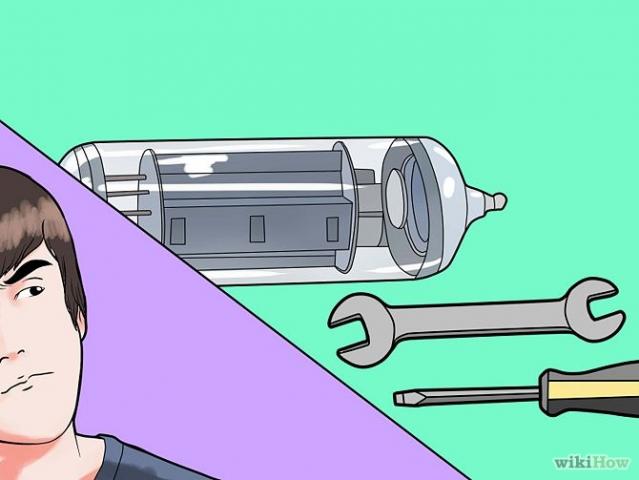
7. Consider how mini tubes are constructed. As you may conclude from these prime examples, Electron Tubes had to stay cool or a break down, and tube failure was inevitable. There were some tubes that were mini in design, specifically made that way to take up less space, and provide adequate amplification with a compact design. Let's talk about them in general terms for a few.
- Early televisions used many types of tubes from small audio amplifiers, measuring half inch in diameter and one inch long, to one and three quarters inch diameter, five inches long sweep tubes, specifically designed and made for the picture tube, oscillating thousands of times a second. Some bright engineer made the connection of the sweep tubes and amplification of RF, and a lot of these cheap amp sweep tube design amplifier units were made under the guise of an amateur radio amplifier, and then converted over for use illegally on 11 meters ( CB BAND ) In fact, the 11 meter band was used by hams for years before the FCC chose this band to be used by the public. Hams did not protest this action, as this band was full of harmonic frequencies and would interfere with local TV channels, but it was a good band for use in making long distance DX contacts. This band unfortunately, is now unregulated, but the one rule that remain from the FCC is that you cannot run more than 4 watts output, but even so, most CBers use a RF amplifier on their CBs either at home or in a moving vehicle, and also, most of the CB amps are now transistorized
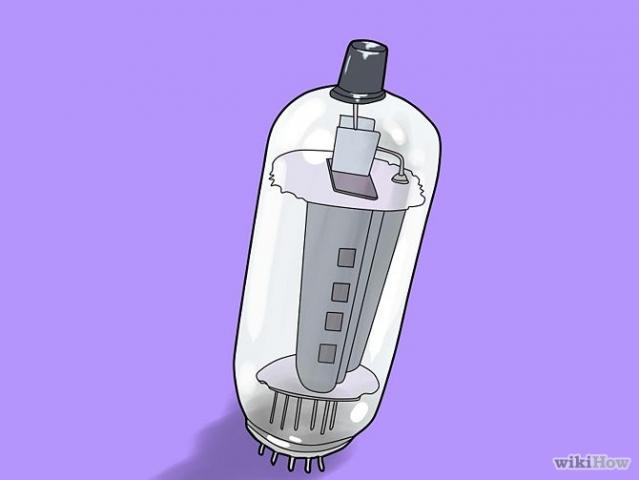
8. Learn about sweep tube amps. Sweep tube amps are still around, although, they are on the outswing of being discontinued, and some sweep tubes cost more than a good 572B. Most of the more popular ones i.e. 6JE6C/6LQ6,6JS6C, 6LB6, 6DQ6 can be found from reputable dealers.
- Sweep tubes that were constant service for TVs, were used to make high performance sweep tube style, base linears. They utilized the tube numbers, 6LR6, 6LB6,6LM6. 6RB6,6MJ6,6JT6 and the popular 6LQ6, which also was exactly the same as 6JE6C, so the manufacturers combined the numbers, 6JE6C / 6LQ6. The last 3 numbers, 6JS6C, 6LB6, 6DQ6 were used in Yaesu, Hallicrafters, and Drake Amateur Radios. Most of the new ones are either made in, and imported from China, or Taiwan. The ones that are made in France and England are high performance, high quality tubes. Eimac has stopped making tubes of the glass envelope types.
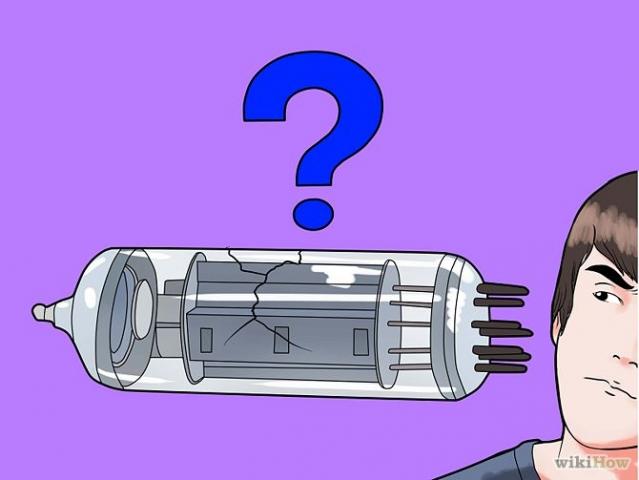
9. Understand what can lead to a breakdown inside the tube. There were several possibilities that could cause its failure, and all could be classed as the end result of a tube. The glass envelope may have burst. One of the pins could have shorted out, and melted off. The tube may light up but not function due to gas buildup in the glass envelope. The filament itself could have burned out, a common occurrence with vacuum tubes, or it just gave up after years of working well for you. Its also interesting to note that insects can cause a short between the plate voltage circuit, and the frame ground. Fried spiders, and roaches do not smell good. This temporary shorting of the circuit can cause damage, but it seldom happens if all the cabinet is intact.
- The vacuum of the tube could lost due to just some of these things happening. Sometimes you could tell that the vacuum was lost by looking at the side of a tube, at what is called a getter, that supposed to collect, and store the gases the tube would emit while in operation. The getter may be silver in appearance when it was working, but if it turns white, or a gray color, you know the vacuum of the tube is lost, and it will not light up, or if it did, it would soon oxidize, and burn out.
- This 811A is out of a matched set of 4 that served in a power amplifier for over 15 years. In normal use, and careful loading, your tubes will last a long long time. The most usable tubes were also made for the government during World War II. There are still electron tubes found in warehouses that were made in the 40's and 50's, and often, you can find some of these older tubes listed for sale on a military surplus buy.
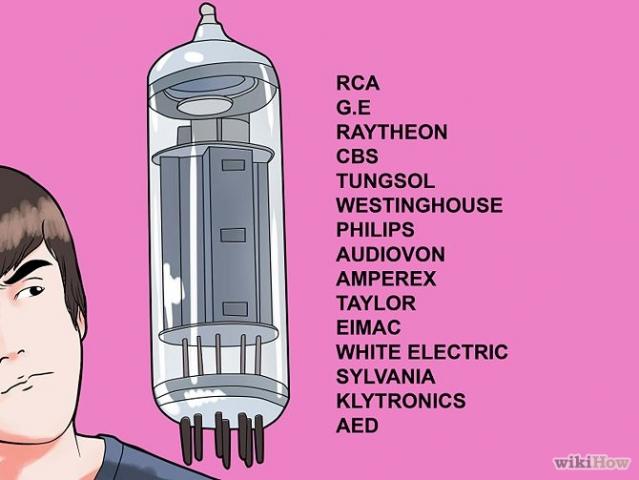
10. Become familiar with the companies that made tubes. Here's a few that made all their tubes in America. RCA, G.E., Raytheon, CBS, Tung-Sol, Westinghouse, Phillips, Audiovon, Amperex, Taylor, Eimac, White Electric, Sylvania, Klytronics, American Electronic Development ( AED ) ( The A was in red, E was in white, and D was in Blue. Patriotic isn't it? ), Philco, and Zenith. Add more if you know them. Shortly after tubes started to be replaced with transistors, Philco sold out to Ford Motor Company. Amperex was sold to a French industry that kept the name, Phillips bought Westinghouse and then White Electronics bought Phillips / Westinghouse, Raytheon bought Audiovon, and then Klytronics went to producing other electronics. Zenith, Sylvania, Tung-Sol and RCA, went into producing transistors. The tube designs and patterns were given to Japanese companies who made them in bulk quantities, and sold them in America, then the Japanese went to making transistors. Technology has been improving since the first tube was designed and built by Marconi. Marconi had the right idea, and it has lasted for near a century.
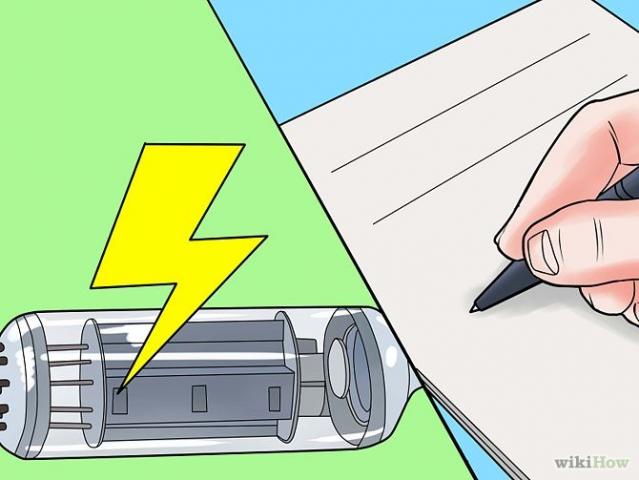
11. Note how voltage can affect the tube. Subjecting a tube's filament to a line surge of DC overvoltage, or spike voltage and some high current could instantly destroy the cathode or filament of the tube, making it useless. Screen grids were made of tungsten and others of really durable wire, but they too, were made to only take so much stress, and they could collapse, or melt, touching the plate or the filament at anytime, causing the tube to ARC inside the envelope, and damage could result to other parts of the device. A very gassy tube could arc through the gas, and cause damage to your equipment.
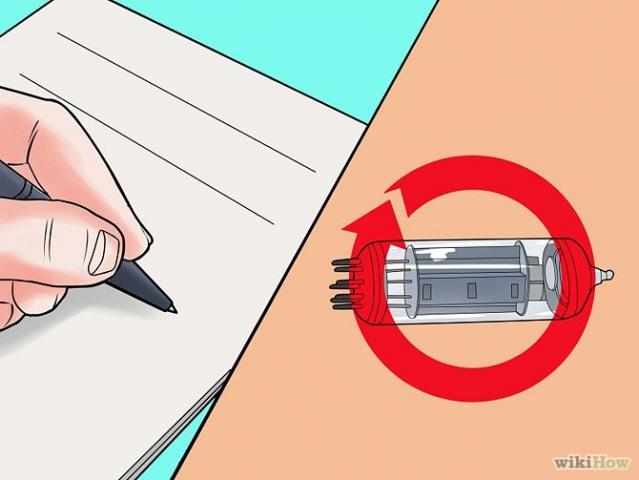
12. Learn about the early days of tubes. The early tube makers, constructed all tubes that they made by hand, and the positioning of the screen(s), plate and filament were crucial to their performance. If a grid or filament was too close, it could be magnetically, or from heat, stretched and short out. If the filament was already saggy, or not made of high resistance, high tolerance materials, and the tube was in a horizontal position, the filament could touch the grid, and short out. If it was set too far away, it would not function properly, or if it did operate, it did it very poorly. This was often the case on some early tubes, although the manufactures had astringent guidelines and scale molds to construct the tube, and weld the parts together. Raytheon was a large distributor and manufacturer of high performance, high quality tubes for the military, and for the radio industry. Phillips/Westinghouse had an entire assembly process for building, and testing all tubes that were manufactured during that time.
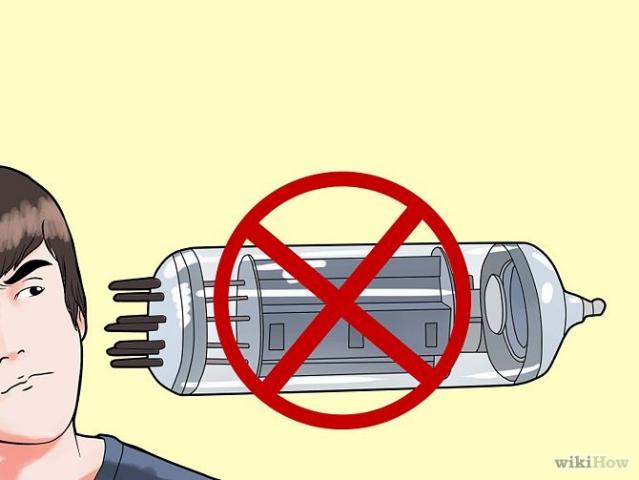
13. Look for signs that these type tubes are bad. The filament won't light up, or if there's a blue glow inside the glass envelope when in use, ( this means it is gassed ) or power output is below normal ranges, it would be considered bad, and the gassy tube would be called "Soft" due to it's inability to perform at normal output, and it's colored gas. The 811s and the 572s have getters to literally soak up the gas inside a tube, but there is a limit as to how much it will absorb, but the worst feeling is to look down the tubes envelope, and see black on the sides of the tube. This is carbon, and can signal tube failure is eminent. The 811s used to cost $5.00 each. Now if you can find the ones made in China, they sell for about $15.00 each. 572s were $11.00 not long ago, and now the ones made in China, which are not near as good as the ones made in the good ole USA, sell for about $38.00 each, and that's from reputable dealers. Here's the kick in the butt that hit the Amateur Radio Amplifier Owners, the 3-500Z or G tubes used to sell for $50.00 from Eimac, a generic brand called Cosmoz from China sell for $160.00 each ! Quite expensive, but still its a needed part if you are a ham, and own an amp that uses the 3-500 style tubes.
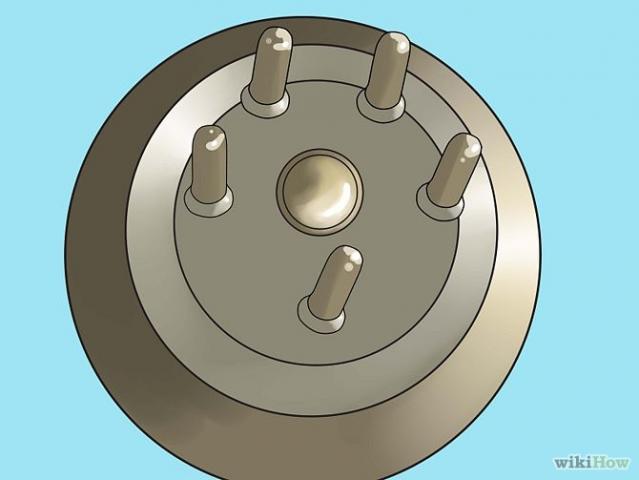
14. Gassy tubes sometimes could be restored by the getters inside. To act quickly, and hopefully degas the tube, you would remove the high voltage on the plate, and allow the tube to heat up by applying the filament power, and let it sit and "cook" for several hours. The Eimac 3-500Z or G, did not have getters. The plate would re-absorb the little gas by "cooking" this tube as described. Most sweep tubes had small getters, and would absorb the gas as it was made inside the tube with normal use.
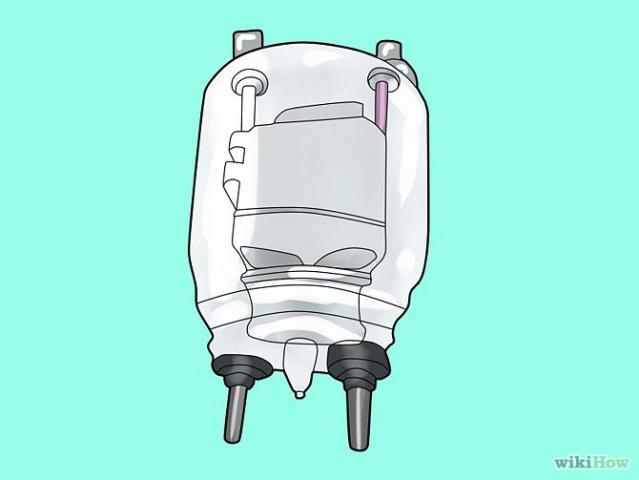
15. The final tube that should be talked about is the 833A triode tube. Makers of fine, but now obsolete, transmitters used this tube as the final output in their power amplifier stage. They were specifically designed to run high voltages, and moderate to medium high grid current, and to withstand considerable heat. Convection from fans positioned above or on the bottom parts of the tube mounting wand forced cool air through the entire transmitter cabinet, and then finally would draw up hot air by the tubes, to cool them down just enough for proper operation. If an 833A got too cold, its efficiency dropped dramatically. Forcing air through the cabinet first, warmed the air just enough to keep this tube in fine shape by not cooling it down too much. Where other tubes had to have air forced by them, the 833As design was meant to run hot.
- The 833A was limited in service to Amateur Radio, since it's design was for the commercial broadcast band, ( 500 Khz to 1700 Khz ) and not for Amateur bands. A ham could have limited success using it on the 160 meter band since its frequencies are 1800 Khz to 2000 Khz. ( or in Amateur Radio Talk, its 1.800 Megaherz to 2.000 Megahertz ) Still means the same thing, just in different calibration numbers.
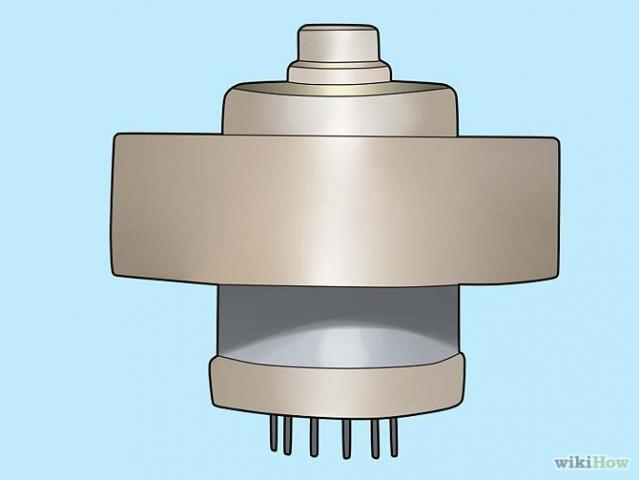
16. Consider the benefits of ceramic tubes. Ceramic tubes replaced the glass bottle tubes years ago, and out perform the glass bottle tubes in a big way. It's hard to test and getter these tubes unless you have a tube tester that will do this job in one step. You can't see the filament in a ceramic tube, but it does its job just the same. High performance tubes such as the 4CX800A tubes from Russia's Svetlana production line gives super high performance with just two tubes. You can easily get over 2 kilowatts of RF power from 2 of these tubes, and they are just loafing at that wattage! An Amateur Radio Operator in the USA is licensed for only 1500 watts PEP power. QRO technologies make a 3 tube model, but it can only be exported. It has not been approved for sale here in the USA. The 2 tube model looks good, and most Amateurs would love to have one someday on their amateur radio bench. Talk about being a lover of high wattage, the guys at QRO really can build great amps but the prices are also high. You only get what you pay for when it comes right down to the facts. An amp of this quality would be a lifetime investment for a serious ham.
- Although, hard to tell about ceramic tubes, purchasing them for use from a dealer outside of the USA is also super tricky. Make sure that if you use another set of cheap ceramic tubes, that they are tested and gettered so they don't destroy your amplifier. An arc thru gas in these tubes WILL cause severe damage to other components in your equipment. It will also destroy the tube within milliseconds! YES, THEY ARE THAT SENSITIVE~! Get a written report as to each tubes performance, and how the testing was done.
- Back in the heydays of tubes, RKO had a tube tester in many supermarkets, drug stores, and even in car dealerships at one time. They sold many different brands, but most were made in the USA, and to be on the safe side, all tube sellers would run a quick check on the tube you brought in, to see if it was usable, or weak, before they sold you a replacement. Those were the days! You did not have to buy them "as is" and hope they were good. A normal amplifier tube like the simple 50C5 sold for .91 cents. The power amplifier tube of a normal black and white TV was only $2.00. You can see that times have changed, and so has electronics.
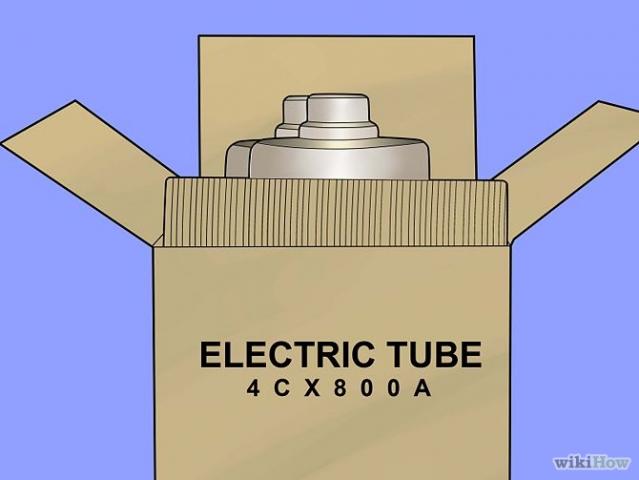
17. One set of the 4CX800A tubes are probably all you will ever need, unless you overdrive the control grid loading them, and burn them out. They are TETRODES, 4 parts, Filament, Plate, Control Grid, and Screen Grid, and loaded in milliamps by variable capacitor loading on the control grid. They still are a rugged tube, and great for amateur radio use, but from now, it is hard to test and getter the ceramic replacement tubes unless you have a ceramic tube testing, and gettering device.
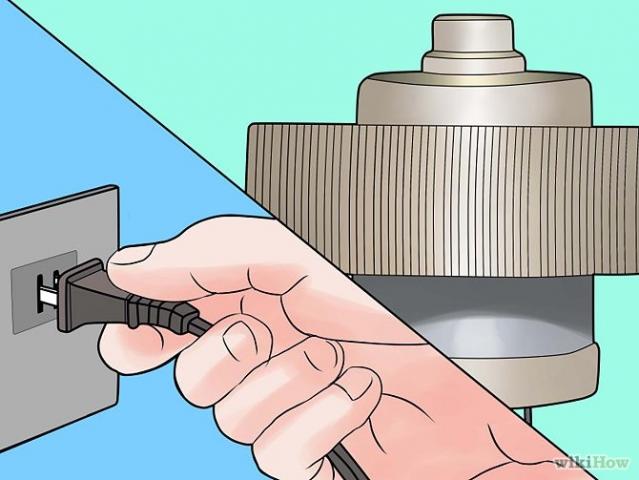
18. Warm up time is a must for all tubes. There is a delay in most tube type devices before they will make a sound, so it stands to reason that any commercial radio, or amateur radio tubes in the equipment, needs to be warmed up before use. Some tubes are cold start tubes.. The Eimac 3-500 series has a cold filament start, but letting them warm up a few minutes before use is not a bad idea at all. The bottle tubes mentioned 811A and the 572B have minimum warm up time of 10 seconds before use, but again, letting them warm up may increase the life of the tube, and be ready to go to full power when it is necessary. The ceramic tube also has a warm up time of not less than 3 minutes. Sweep tubs should be warmed up at least 5 to 8 minutes to prevent them from being too cold, and damaging the tubes.
Tips
- One more thing to mention, and that is the ceramic tubes design was such that it would be theoretically operational if a nuclear exchange. Where normal glass envelope tubes would not function after a nuclear blast, ceramic tubes would still be in use. The biggest ceramic tube that was available for commercial use, had to be cooled by circulating water. It had a radiator like a car, and was cooled by freon exchange. The number that was on it listed this tube as a 125CX50000ACW One tube that had an output of 50,000 watts!
- Look and see if there is a blue glow when in use. Tubes with a high volume of gas may even look violet. Please note this also. Some tubes have mercury in them, as a necessary part of their function. These are often diode or rectifier tubes, changing AC ( alternating current ) to DC ( direct current ), and they will have a blue glow when in operation, like a dusk to dawn lamp. This is a normal function for these tubes, even tho they look gassy. Most of these tubes were replaced in the late 70s by ceramic diode replacement inserts, that were even more high performance diode tubes and were more efficient in their service, but there are still some of the High Voltage Mercury vapor rectifier tubes in use.
- Old tubes often have other elements, such as thorium and radium coatings on the tungsten filaments that are slightly radio active, but not in dangerous amounts. Small amounts of these elements were used for decades to aid in emitting electrons. If they break, don't panic. Just be careful when handling them, and don't throw them in the trash.
- Use Goggles and Gloves when handling tubes of any kind. Glass shattering will cut and injure your hand, yes, but its always nice to know that you got some protection between your tubes, and your eyes!
- Examine any tube you want to use. Used tubes will show either carbon deposits, weak saggy filaments, and / or hot spots on the plate if they have been abused in service. Glass envelope tubes are pumped to a high vacuum, and sometimes will shatter unexpectedly, throwing glass at you, so use goggles when working with glass envelope tubes. * A note here, in early days, they did in case the tubes in metal envelopes. Glass shortly followed, making the tubes easier to inspect for defects visually.
- Dispose of these tubes properly by taking them to an electronic recycling center. Please do not just throw them in the trash, as mercury is a toxic heavy metal, and pollutes landfills. Mercury vapor tube numbers include 866A, 8008, 6967, and WX88. These were popular numbers during the early days of commercial radio, and amateur radio use in transmitters and in small amplifiers.
Warnings
- Tubes are voltage sensitive, where as transistors are current sensitive.
- Nitrogen is also used to moderate some tubes to prevent the gassing of some small tubes. Nitrogen will not let parts oxidize easily and then it can allow for moderate pumping of vacuum.
- Never try to adjust the position, or replace a metal object on a tube when it is hot, or has just been turned off. Lethal voltages still could be present on the plate cap.
- The top part of the tube is where the high voltage will be placed. The metal cap on top is for the connection of the high voltage to the plate of the tube in transmitting tubes. Do not ever touch the top of a transmitting tube that is in operation. To do so, may be fatal.
- High performance, high current tubes are vacuum pumped to a high vacuum state. This evacuation of air is necessary to prevent oxidization, and early tube failure They could shatter at anytime. Never touch a tube with your bare fingers or hand that has just been in use. It will surely be too hot to touch, and you can't tell just by looking if glass is hot or not.
- Use goggles and gloves when handling high performance vacuum tubes. Glass envelopes can shatter, sending dangerous shards of glass flying through the air.
- Transmitting tubes rely on a constant supply of fully rectified, ripple free D.C. High Voltage to perform their duties. High Voltage is present when in operation. Large capacitors store a huge charge of power, and smooth out ripples in the D.C. voltage and current. Watch out for a capacitor that has been energized and could still have a charge of high voltage inside.
- Mercury vapor tubes will have drops of mercury inside their glass envelope. Do not shake this tube to gather the mercury in one place. Don't throw these away in a trash can. Take them to a recycling center for proper disposal and recycling.
- Never try to "force" a glass tube to go in a socket. There is always a reason its not going in the socket easily.
Shared under a Creative Commons License:
http://www.wikihow.com/Find-out-if-an-Electronic-Tube-Is-Good
This site is run by unpaid, volunteer moderators, some of which have commercial interests in the guitar amplification business. They will all attempt to the best of their abilities to not interfere with commercial discussions. All messages on this forum express the views of the author and do not necessarily reflect the opinions of the site and (or) its administrators. This site will not be held responsible for the content of any messages posted on this forum. The operation of this site is supported financially by its members as a 501(c)(3) tax-exempt organization.
